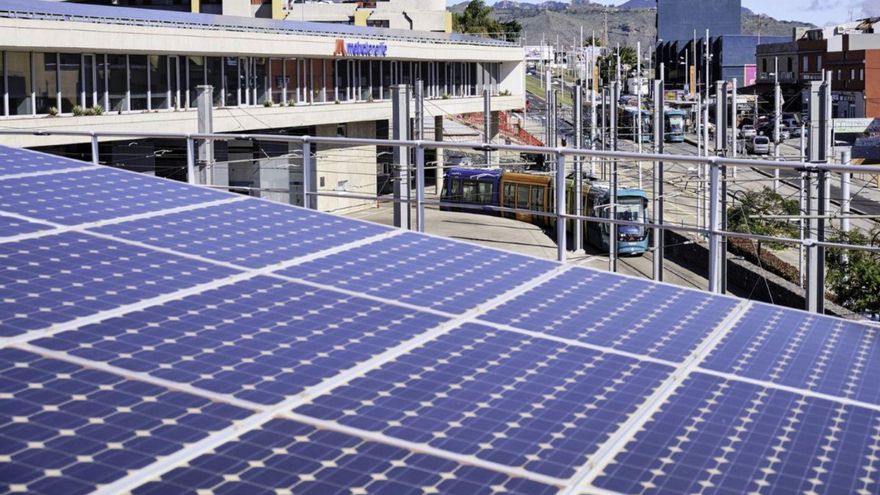
The use of the tram has avoided the emission of 4,360 tons of carbon dioxide (CO2) in four years, the period 2018-2021. The equivalent of what 900 private cars pollute in a year. A modest figure because Tenerife’s car fleet is 850,000 vehicles plus another 30,000 rentals, almost one per inhabitant (970,000, according to the 2021 census). But also a remarkable figure within the path towards sustainability and respect for the environment.
The Island Councilor for Mobility and President of MetrotenerifeEnrique Arriaga, underlines, in this sense, the important contribution of the tramway to the environmental quality of the Metropolitan Area, in line with the line set by the European Union (EU) to reduce greenhouse gas emissions by 40% for the year 2030.
The data is extracted from the Green Bond Allocation and Impact Report recently prepared by Metrotenerife and the consulting firm Analistas Financieros Internacionales (AFI). Arriaga remarks: «The tram contributes to the environmental improvement of Santa Cruz and La Laguna by eliminating some two million trips by private vehicles from the streets each year». On the other hand, it emphasizes that «the rail transport sector will play a key role in the European sustainable mobility policy and in achieving the objective of reducing greenhouse gas emissions.
Arriaga sentences: «Guided transport will mark mobility in Europe, so we must commit to improving our tram network, with the implementation of new lines, in addition to connecting the south and the Metropolitan Area of the Island by train».
“The Tenerife Tram it is a sustainable means of transport» recalls, for his part, the insular director of Mobility, José Alberto León. He adds that in order to further reduce its energy consumption “we have a photovoltaic plant on the roof of the Metrotenerife Workshops and Garage facilities, whose renewable energy production capacity is 880 kW”.
energy saving
From the year of its installation in 2008 until the year 2021, the annual average production has been 1,356,000 kWh/year, the approximate equivalent to the consumption of more than 400 homes with a monthly average of 270 kWh, according to Red Eléctrica Spanish. Last year more than 18% of the energy needs of the tramway network were covered by the energy generated in this Metrotenerife photovoltaic plant.
Another energy saving measure that the Tenerife Tram derives from the orography of the metropolitan area and from the electrical configuration of its traction system. In this sense, due to the continuous slope on which the line runs, the energy created by the braking of the trams is injected into the catenary of the system so that it can be used by other units in service, which produces a savings of up to 34% in the total traction consumption of the tram fleet.















